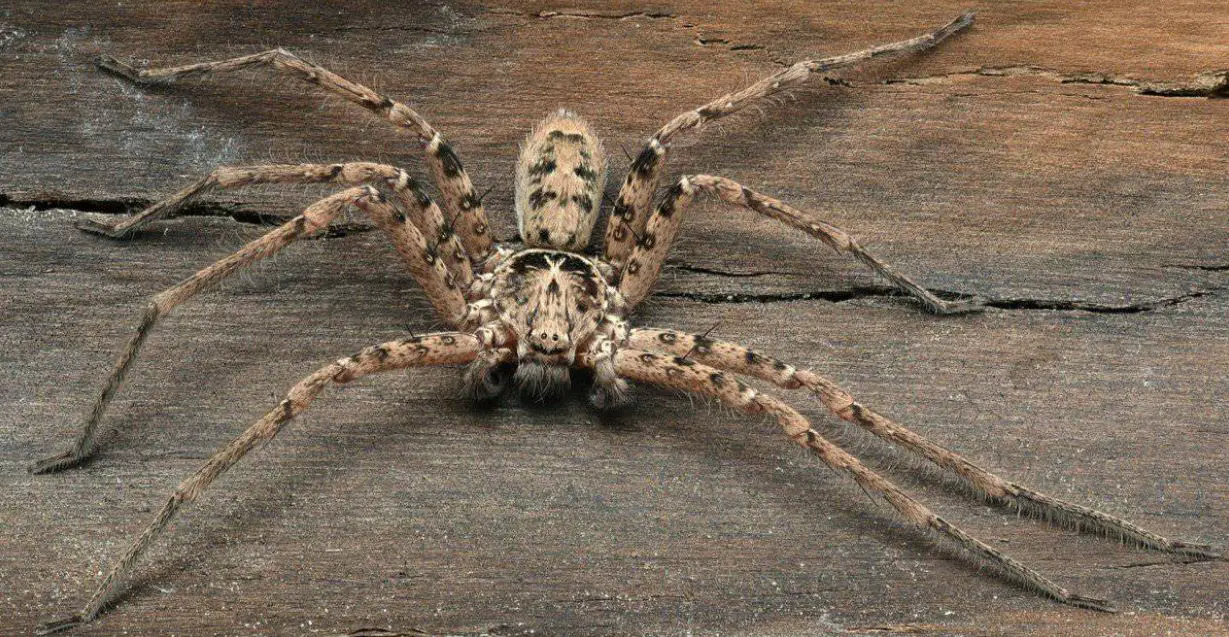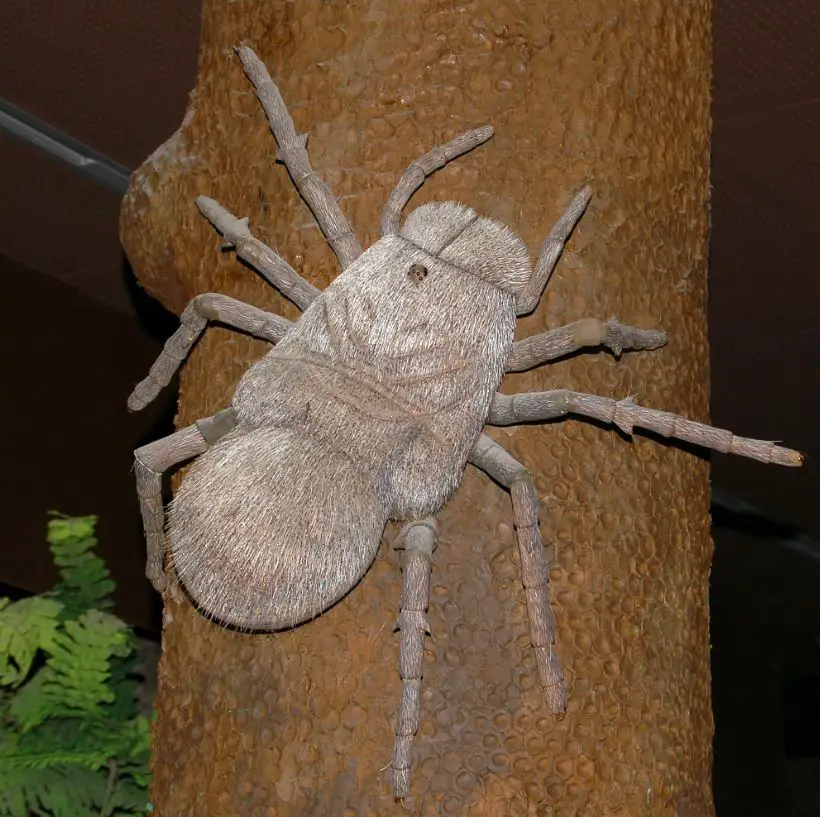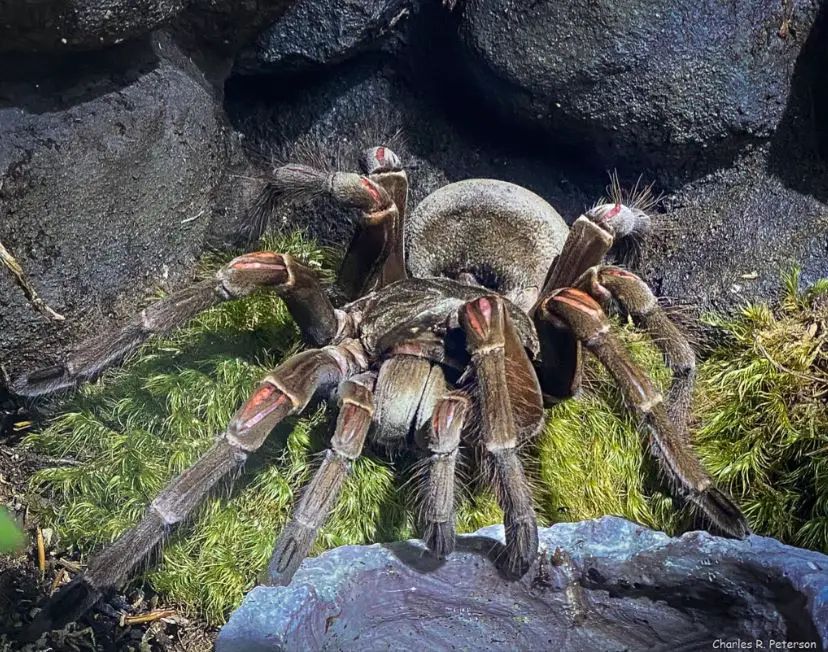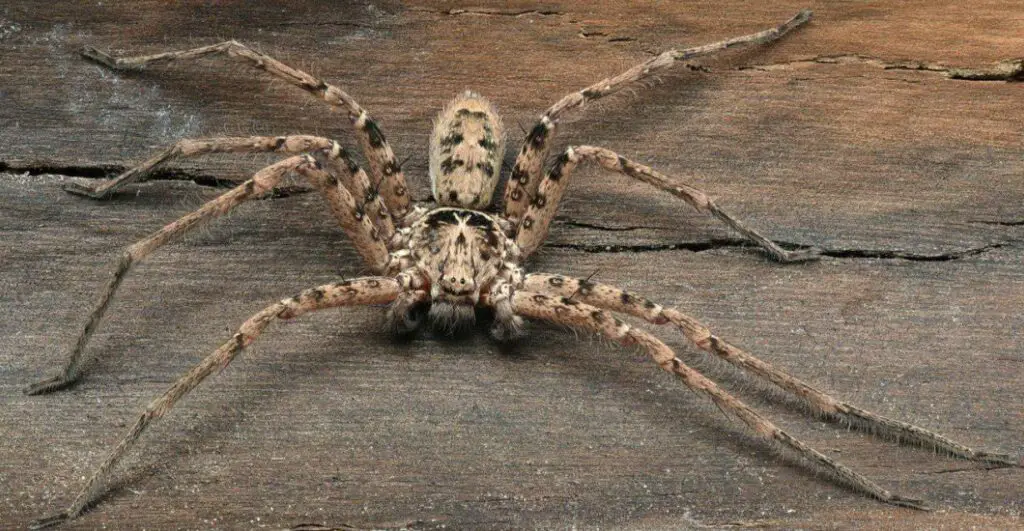The Largest Spider that Ever Existed – Are Spiders Getting Bigger?

Spiders, the masters of silk-spinning and eight-legged elegance, have captured human fascination for centuries. These arachnids are found all around the globe, from the darkest corners of your basement to the lush jungles of the Amazon.
But what has been gnawing at the minds of arachnophiles and arachnophobes alike is the question: Are spiders getting bigger? And if so, what is the largest spider that ever existed?
In this comprehensive exploration, we will delve into the mysterious world of spiders, examining their size trends, debunking myths, and unveiling the astonishing history of the largest spiders on record. Arachnophobia or arachnophilia, by the end of this article, you’ll have a newfound appreciation for these incredible creatures!
Spiders: The Weavers of the Web
Before we can dive into the intriguing question of spider size, let’s start with some basics about these captivating arachnids.
The Fascinating World of Arachnids
- Spiders belong to the class Arachnida, which also includes scorpions, ticks, and mites.
- There are approximately 48,000 known species of spiders, and scientists believe there may be many more awaiting discovery.
- Spiders are ancient creatures, with fossil evidence dating back 380 million years.
- They play a vital role in ecosystems by controlling insect populations.
Are Spiders Getting Bigger?
Now, let’s address the burning question: Are spiders getting bigger? Many people swear that the spiders they encounter today seem larger than those they remember from the past. Is there any truth to this perception?
The Perception of Size
- It’s common for people to perceive spiders as larger than they are due to fear and anxiety.
- Our brains tend to magnify the size of objects we are afraid of.
- This psychological effect can make a tiny spider seem enormous.
Spider Size: A Matter of Perspective
- Spider size varies greatly among species, from a fraction of an inch to nearly a foot in leg span.
- Some species, like the Goliath bird-eater tarantula, are indeed quite large, while others are minuscule.
- The perception of increasing spider size may be due to encountering larger species or individuals.
Evolution and Spider Size
- Over millions of years, spiders have adapted to different environments and niches.
- Evolution has driven the development of various sizes, shapes, and behaviors in spiders.
- In some cases, larger spiders may have a better chance of survival and reproduction.
Debunking the Myths
Before we jump into the realm of the largest spiders, let’s dispel some common myths and misconceptions about these remarkable creatures.
Myth: All Spiders Are Venomous and Dangerous
- Fact: The majority of spiders are harmless to humans. Only a few species possess venom potent enough to be a concern, and fatalities are extremely rare.
Myth: All Spiders Spin Webs
- Fact: While many spiders are skilled web builders, not all of them spin webs. Some are active hunters that rely on speed and stealth to catch their prey.
Myth: Daddy Longlegs Are Highly Venomous
- Fact: Daddy longlegs, also known as harvestmen, are not spiders and are not venomous to humans. They belong to a different arachnid order.
The Largest Spider That Ever Existed
Now that we’ve set the record straight on some spider myths, let’s turn our attention to the colossal arachnids that have roamed the Earth throughout history. The title for the largest spider that ever existed is hotly contested, with a few contenders vying for the crown.
The Megarachne: A Giant Arachnid from the Past
One of the frontrunners in the race for the largest spider in history is the Megarachne, an ancient arachnid that lived around 300 million years ago during the Carboniferous period. Its fossilized remains were discovered in Argentina.

Megarachne’s Size
- Estimated to have had a leg span of up to 20 inches (50 centimeters).
The Controversy
However, the Megarachne’s classification as a spider has been a subject of controversy. Some scientists argue that it may have been more closely related to sea scorpions than true spiders. This debate highlights the challenges of identifying ancient arachnids from incomplete fossil evidence.
Top 10 Largest Spiders in the World by Leg Span
| Rank | Spider | Leg Span (inches) |
|---|---|---|
| 1 | Giant Huntsman Spider | 12 |
| 2 | Goliath Bird-Eating Spider | 11 |
| 3 | Brazilian Salmon Pink Birdeater Spider | 10 |
| 4 | Brazilian Giant Tawny Red Tarantula | 10 |
| 5 | Colombian Giant Redleg Tarantula | 9 |
| 6 | Chaco Golden-Knee Tarantula | 8.5 |
| 7 | Hercules Baboon Spider | 8 |
| 8 | Face-Sized Tarantula | 8 |
| 9 | Camel Spider | 6 |
| 10 | Brazilian Wandering Spider | 5.9 |
Take note that this table utilizes leg span as the ranking criterion, measuring the distance between the tips of the longest legs.
However, if we were to rank the spiders by mass, the undisputed champion would be the Goliath Bird-Eating Spider. This remarkable arachnid holds the title for the world’s largest spider, surpassing its peers in both leg span and mass.
Top 10 Largest Spiders in the World by Mass
| Rank | Spider | Mass (ounces) |
|---|---|---|
| 1 | Goliath Bird-Eating Spider | 5.6 |
| 2 | Brazilian Salmon Pink Birdeater Spider | 5 |
| 3 | Colombian Giant Redleg Tarantula | 4.2 |
| 4 | Brazilian Giant Tawny Red Tarantula | 4 |
| 5 | Chaco Golden-Knee Tarantula | 3.5 |
| 6 | Hercules Baboon Spider | 3.5 |
| 7 | Face-Sized Tarantula | 3 |
| 8 | Giant Huntsman Spider | 2.8 |
| 9 | Camel Spider | 2.5 |
| 10 | Brazilian Wandering Spider | 2.1 |
Keep in mind that this table relies on the average mass of each species. It’s important to note that individual spiders can vary in size, with some being larger or smaller than the species average.
The Goliath Bird-Eater: A Modern Giant
In the modern world, the Goliath bird-eater tarantula takes the crown as the largest spider. This massive tarantula can be found in the rainforests of South America.

Goliath Bird-Eater’s Size
- With a leg span of up to 11 inches (28 centimeters), this tarantula is a true behemoth among spiders.
- Despite its intimidating size, the Goliath bird-eater is relatively docile and primarily preys on insects, small vertebrates, and, as its name suggests, the occasional bird.
The Huntsman Spider: An Impressive Contender
While the Goliath bird-eater holds the title for the largest spider in terms of both the mass and the leg span, the huntsman spider gives it tough competition in terms of leg span.
Huntsman Spider’s Size
- Some huntsman species boast a leg span of 12 inches (30 centimeters) or more.
- Their bodies can be quite large and flat, making them appear even more formidable.
The Misunderstood Giants
Despite their imposing appearance, huntsman spiders are generally harmless to humans. They are known for their remarkable speed and agility, which they use to hunt insects.
The Largest ‘Giant Huntsman Spider’ Ever Recorded
The largest giant huntsman spider ever recorded had a leg span of 30 cm (12 inches) and a body length of 4.6 cm (1.8 inches). This individual was discovered in Laos during the 1960s and is currently conserved in the Muséum national d’histoire naturelle in Paris, France.

Factors Affecting Spider Size
Environmental Conditions
- The availability of prey and suitable habitats can impact spider size.
- In resource-rich environments, spiders may grow larger due to better nutrition.
Evolutionary Pressures
- Evolutionary selection pressures can favor larger size in some spider species.
- Larger spiders may have advantages in capturing larger prey or competing with other predators.
Species Variation
- Spider size can vary significantly between different species.
- Each species has evolved to occupy a specific ecological niche, influencing its size and characteristics.
FAQs: Addressing Common Questions
Let’s take a moment to answer some common questions about spiders and their behavior.
Can spiders continue to grow throughout their lives?
Yes, spiders can grow throughout their lives, but their growth rate typically slows down as they mature. This growth is achieved through a process called molting, during which they shed their exoskeleton and develop a new, larger one.
Are larger spiders more venomous than smaller ones?
Not necessarily. Spider venom potency varies between species, and it is not directly correlated with size. Some smaller spiders can have highly potent venom, while larger ones may have less potent venom.
Do spiders in urban areas tend to be larger than those in rural areas?
The size of spiders in urban areas versus rural areas is influenced by factors such as habitat and food availability. There is no general rule that urban spiders are larger, as it depends on the specific conditions of the environment.
What is Australia’s deadliest spider?
Australia is home to several venomous spiders, but one of the deadliest is the Sydney funnel-web spider (Atrax robustus). Its venom is highly potent and can be life-threatening if not treated promptly. However, fatalities are rare due to the availability of antivenom.
How dangerous is a huntsman spider?
Huntsman spiders (Sparassidae) are not considered dangerous to humans. They have large, intimidating appearances, but their venom is relatively weak and not harmful to people. While their bite may be painful and cause mild discomfort, it is not life-threatening.
Are huntsman spiders friendly?
Huntsman spiders are generally considered harmless and are not aggressive toward humans. In fact, they are often seen as beneficial because they help control insect populations by hunting and capturing pests around homes. They are not known to attack or pose a threat to people.
What spiders can kill you in Australia?
While Australia has some venomous spiders, fatalities are extremely rare due to the availability of medical treatment and antivenom. Besides the Sydney funnel-web spider, other potentially dangerous species include the redback spider, mouse spider, and white-tailed spider. However, prompt medical attention can prevent severe outcomes.
What is the biggest spider in Australia?
The title of the biggest spider in Australia goes to the Huntsman spider. While they can have leg spans of up to 15 centimeters, they are not dangerous to humans and are known for their speed and agility.
Do huntsman spiders jump at you?
No, huntsman spiders do not jump at humans. They are known for their ability to move quickly and can appear suddenly, which might startle some people. However, they do not exhibit jumping behavior like some other spider species.
What is the Australian spider season?
There isn’t a specific “spider season” in Australia. Spiders can be found throughout the year, but their activity may vary depending on environmental factors, such as temperature and rainfall. In warmer months, you may encounter more spider activity as they become more active in search of prey.

